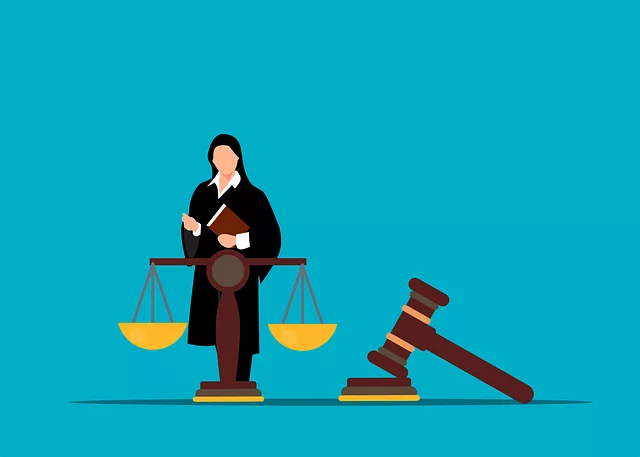Category: Experience with defending wire fraud charges
Experience with Defending Wire Fraud Charges: Navigating Complexities for a Safer Financial Ecosystem
Introduction
In an era where digital transactions dominate global economic activities, the concept of defending wire fraud charges has emerged as a critical aspect of safeguarding financial systems. This article delves into the intricate world of combating and defending against wire fraud, exploring its historical evolution, global implications, and the various strategies employed to mitigate this growing concern. By examining real-world examples and analyzing current trends, we aim to provide valuable insights for professionals, policymakers, and individuals alike. Understanding the experience with defending wire fraud charges is essential to fostering a secure digital environment and protecting the integrity of financial markets worldwide.
Understanding Wire Fraud Charges: Unraveling the Complex
Definition: Wire fraud, as defined by legal experts, involves using electronic communication in furtherance of a scheme or plan to defraud another person or entity of money or property. This includes transactions conducted via wire, radio, computer networks, or other digital means. Defending against such charges requires a multifaceted approach, encompassing legal strategies, technological solutions, and regulatory frameworks.
Core Components:
- Scheme to Defraud: At its heart, wire fraud entails a deliberate plan to deceive individuals or organizations for financial gain. This scheme often involves false pretenses, material misrepresentations, or the concealment of crucial facts.
- Electronic Communication: The use of modern communication technologies facilitates the execution of fraudulent activities across borders and time zones. Emails, text messages, instant messaging apps, and secure websites are commonly employed to initiate and carry out scams.
- Financial Loss: Wire fraud is characterized by its intent to cause financial harm. This can range from small-scale identity theft to large-scale investment scams, resulting in significant economic losses for victims.
Historical Context:
Wire fraud has been a concern since the advent of telecommunications but gained prominence with the rise of the internet and digital banking. Early instances involved phone phishing schemes and email scams targeting individuals. As financial markets became more interconnected globally, so did fraudulent activities, leading to the need for robust international cooperation in law enforcement and regulatory measures.
Global Impact and Trends: A Digital-Age Phenomenon
International Reach: Wire fraud has transcended national boundaries, becoming a truly global issue. Scams originating from one country can affect individuals and businesses worldwide through sophisticated online networks. This interconnectedness requires coordinated efforts between nations to combat and defend against such crimes effectively.
Regional Disparities: The impact of wire fraud varies across regions due to differing economic conditions, technological infrastructure, and regulatory frameworks. For instance:
- Developed Markets: Countries like the United States, the United Kingdom, and Australia have robust financial systems but face constant threats from sophisticated cybercriminals. These nations invest heavily in cybersecurity and have stringent legal frameworks.
- Emerging Economies: Rapid digitalization in countries such as India, Brazil, and parts of Africa has led to an increase in wire fraud cases. Limited regulatory oversight and a growing internet penetration make these regions particularly vulnerable.
Trending Scams:
- Phishing and Spoofing: Emails and text messages pretending to be from legitimate sources (e.g., banks) remain prevalent, tricking recipients into revealing sensitive data.
- Investment Schemes: Ponzi schemes and binary options scams target investors, often promising high returns with minimal risk.
- Ransomware Attacks: Cybercriminals encrypt important files, demanding payment in return for the decryption key, causing significant financial and operational disruptions.
Economic Considerations: The Financial Implications
Market Dynamics: Wire fraud can significantly impact financial markets, leading to market volatility and eroding public trust. High-profile cases may cause investors to become more risk-averse, affecting economic growth. Conversely, successful prosecution of fraudsters can restore confidence in the banking system.
Investment Patterns: Scams targeting investors disrupt capital flows and can distort asset prices. Fraudulent activities in stock markets or cryptocurrency exchanges erode wealth and hinder legitimate investment opportunities.
Economic Losses: According to a report by the Federal Trade Commission (FTC) in 2021, Americans lost approximately $3.4 billion to fraud in one year, with wire fraud contributing significantly to this figure. The true economic impact is likely underreported due to unreported cases and the challenge of attributing losses to specific fraudulent activities.
Technological Advancements: Empowering Defense Strategies
Anti-Fraud Software: Advanced artificial intelligence (AI) and machine learning algorithms are transforming the detection and prevention of wire fraud. These technologies can analyze vast datasets, identify patterns, and predict potential scams, enhancing the accuracy of fraud screening processes.
Blockchain Technology: The underlying technology behind cryptocurrencies offers a secure and transparent way to conduct transactions. Blockchain’s immutability and distributed ledger system make it difficult for fraudsters to manipulate data, providing a robust defense against certain types of wire fraud.
Biometric Authentication: Implementing biometric security measures, such as facial recognition or fingerprint scanning, adds an extra layer of protection during online transactions, making it harder for unauthorized individuals to gain access.
Dark Web Monitoring: Law enforcement agencies and private companies utilize specialized tools to monitor the dark web, where fraudsters often coordinate their activities. This proactive approach helps in identifying emerging scams and tracking down perpetrators.
Regulatory Frameworks: A Global Collaboration
International Cooperation: Organizations like INTERPOL and the Financial Action Task Force (FATF) facilitate global cooperation in combating financial crimes, including wire fraud. These entities provide a platform for sharing intelligence, best practices, and legal frameworks to address cross-border scams.
Data Protection Laws: Regulations such as the General Data Protection Regulation (GDPR) in Europe and the California Consumer Privacy Act (CCPA) in the US empower individuals to control their personal data. This can deter fraudsters from collecting and using sensitive information for malicious purposes.
Know Your Customer (KYC) Standards: Financial institutions are subject to KYC regulations, which require them to verify customer identities and monitor transactions for suspicious activities. Strict adherence to these standards can significantly reduce the success rate of wire fraud schemes.
Defense Strategies: Protecting Against Wire Fraud
Customer Education: Educating customers about common scams and teaching them to recognize potential threats is a critical first step in defense. Financial institutions and government agencies conduct awareness campaigns to empower individuals to protect themselves.
Multi-Factor Authentication (MFA): Implementing MFA adds layers of security during online banking or e-commerce transactions, making it more difficult for unauthorized users to gain access to accounts.
Fraud Monitoring Systems: Banks and financial institutions employ sophisticated fraud detection systems that analyze transaction patterns, customer behavior, and external data sources to identify suspicious activities.
Legal Measures: Strict laws and severe penalties are essential to deterring wire fraudsters. Countries with robust legal frameworks often see lower incidence rates of such crimes. Proactive law enforcement and successful prosecutions send a strong message to potential perpetrators.
Case Studies: Learning from Successes and Setbacks
Successful Prosecution: In 2019, a major international wire fraud scheme involving investment scams and money laundering was dismantled by authorities in multiple countries. The operation involved over 500 victims and resulted in the recovery of millions of dollars. Strict cooperation between law enforcement agencies and financial regulators led to this success.
High-Profile Failure: A notorious case of a sophisticated phishing scheme targeted thousands of individuals, resulting in significant financial losses. Despite extensive investigations, authorities struggled to identify and prosecute the perpetrators due to the complex nature of the crime and the use of advanced technologies by the fraudsters.
The Future of Wire Fraud Defense: Staying Ahead of the Curve
As technology advances, so do the tactics employed by cybercriminals. The fight against wire fraud requires a dynamic approach that keeps pace with evolving threats. Here are some key areas to watch:
- AI and Machine Learning: As AI continues to mature, its role in fraud detection will become even more critical. Advanced algorithms can adapt to new patterns and learn from past successes and failures.
- Quantum Computing: While still in its early stages, quantum computing could potentially enhance cryptographic security, making it harder for hackers to breach digital defenses.
- RegTech (Regulatory Technology): Startups and established companies are developing RegTech solutions to streamline compliance processes and automate regulatory reporting, reducing the burden on financial institutions.
- Enhanced Cybersecurity Collaboration: Global partnerships between government agencies, law enforcement, and the private sector will be crucial in sharing intelligence and coordinating responses to emerging threats.
Conclusion: A Collective Effort for Digital Security
Defending against wire fraud charges is a complex endeavor that demands a multifaceted approach involving technology, regulation, and public awareness. As the digital economy continues to grow, so does the need for robust defenses. By understanding the global implications, adopting advanced technologies, and fostering international cooperation, we can create a safer digital environment. This collaborative effort ensures the protection of individuals, businesses, and financial institutions worldwide.
Expert Wire Fraud Defense: Save Time & Money – Free Consultation

Facing wire fraud accusations can drain your resources and cloud your future. But with our experienc…….
Expert Wire Fraud Defense: Save & Gain Peace of Mind Across Industries
Protect Your Reputation & Save Thousands: Expert Wire Fraud Defense
Expertise Saves You: Stop Wire Fraud, Protect Your Assets Now

Facing wire fraud accusations can be a financially devastating and emotionally taxing experience. Bu…….
Save Money: Expert Wire Fraud Defense – Protect Your Assets Today!
Expert Defense Against Wire Fraud: Save with Proven Strategies for Success

Facing civil litigation for securities violations, especially wire fraud charges, can deplete your r…….
Save Money with Proven Wire Fraud Defense Strategies – Free Consultation Now
Save Thousands: Expert Wire Fraud Defense, Free Consult – Uncover New Strategies

Facing wire fraud accusations? You need a legal team with proven experience and a track record of su…….
Expert Wire Fraud Defense: Save Thousands, Stop Healthcare Charges

Facing healthcare wire fraud charges can be financially devastating and emotionally draining. But yo…….












